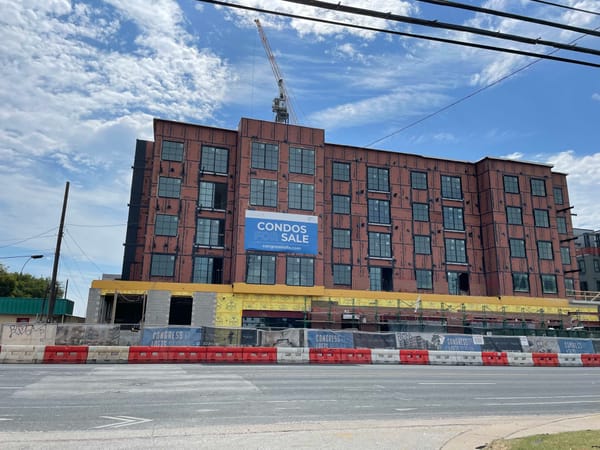It's time for Austin to wake up to TxDOT's I-35 disaster
The questions TxDOT won't answer about the I-35 expansion.
The following article was contributed by Sinclair Black, the internationally renowned architect and urban designer. For years Black has been a prominent critic of TxDOT's I-35 expansion plans. He has pushed for an alternative plan, RECONNECT AUSTIN, which proposes burying the highway and building an urban boulevard on top.
TxDOT continues to cram an entirely unacceptable concept for the rebuild of the I-35 corridor down Austin’s throat. Meantime, the know-nothing good ol’ boys at the Chamber of Commerce and RECA insist on dividing Austin taxpayers. It’s all about the “go along, get along” mentality rather than any real understanding of TxDOT’s failures.
TxDOT failures include but aren’t limited to:
- Failure to listen or learn anything from the real stakeholders (you, the Austinite/taxpayer).
- Failure to comprehensively address air pollution and climate change within the I-35 corridor. TxDOT’s “Air Quality” and “Greenhouse Gas” analyses are severely lacking, and do not address how I-35 as it stands today contributes to air pollution and climate change. It also fails to address particulate matter (PM2.5 and PM10), NOx (ozone precursors), VOCs, and benzene. Children are especially vulnerable to air pollution, and “there are over 80 daycares, schools, and children’s hospitals within 0.3 miles of I-35.” (The Parents’ Climate Community). The effect of air pollution from I-35 right now on UT students and the general population is not adequately addressed, and with an expansion, any such effects are guaranteed to be worsened.
- Failure to understand “congestion.” Just moving trucks off I-35 would likely solve the majority of the “congestion problems.” A pilot study by the Texas Transportation Institute lowered truck tolls on SH 130 and found that trucks were incentivized to move to SH 130. The I-35 Corridor Advisory Committee even recommended, as far back as 2011, that the designations of I-35 and SH 130 be switched in order to route trucks around Central Austin.
- Failure to comprehend the reality of a “barrier.” The high speed and dangerous ramps are the first barrier. The current frontage roads are the second offender.
- Failure to provide efficient emergency services, police, EMS, and fire. Reconnect Austin proposes to station ALL services underground, enhancing the city’s “Good Samaritan Program.”
- Failure to engage the city’s world-class consultants, retained by the City Council to advise them directly on best practices for the design and construction of freeways in cities. That team has been sidelined by city staff at the Austin Transportation Department's so-called "corridor office."
- Total Failure to provide a fair comparison of the return on investment between TxDOT’s preferred scheme and the community alternative, RECONNECT AUSTIN. The City of Austin should guarantee the taxpayers that no major public investment will be made with their dollars without this third-party analysis.
This list mentions just a fraction of the TxDOT failures that will negatively impact the City of Austin and the surrounding communities if we don’t speak up now. The community alternative RECONNECT AUSTIN has detailed solutions to most of the issues presented here.
In addition to capping the highway, RECONNECT AUSTIN proposes building a boulevard on top that would free up over 30 acres of developable land downtown and many more acres at UT Austin. The existing frontage roads, land which TxDOT uses tax free, could be used instead for much needed housing and community-serving uses. This is about a long-term strategy to both reconnect the city and build taxbase that provides revenue to the City of Austin, Travis County, AISD, and Central Health, and the State of Texas, in perpetuity.
We have a once-in-a-lifetime opportunity here. I-35 has stood for nearly 70 years, and it is likely that what is constructed by TxDOT will stand for another 70. We can live with another bigger barrier – or we can support Austin’s long-term economic development and enhance the quality of life for all Austinites. Which would you choose?





